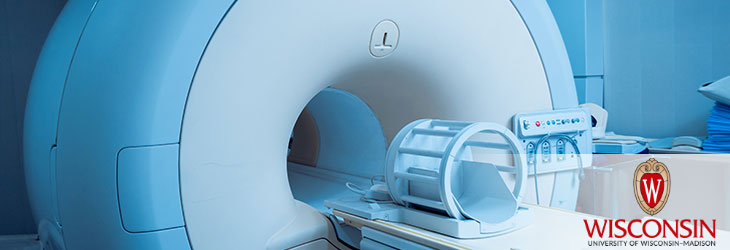Radiation Therapy

Degrading Tumors with Microwave Heat Probes
WARF: P120091US01
Inventors: Christopher Brace, Jason Chiang
The Wisconsin Alumni Research Foundation (WARF) is seeking commercial partners interested in developing a refined design for localized cancer therapy by microwave-emitting slot antennas.
Overview
While primary liver cancer remains one of the most pervasive solid malignancies worldwide—afflicting a million new patients annually—more than 70 percent of cases are ineligible for surgical removal. Minimally invasive therapies, like thermal tumor ablation, are becoming a more common alternative to treat this and other solid tumors, such as those of the lung, kidney and bone, and potentially breast, prostate and glands.
During microwave tumor ablation, electromagnetic energy physically penetrates the tumor and is converted to heat. Enough heat will destroy the cancerous tissue. Ongoing clinical trials have been very promising, but existing devices can cause electromagnetic energy to propagate along the antenna shaft, leading to elongated ablations that can excessively harm healthy tissues. Cooling and choked antenna designs only partially address this problem.
A modified antenna model is needed to precisely confine the microwave fields and therapeutic heat generation to cancerous regions.
During microwave tumor ablation, electromagnetic energy physically penetrates the tumor and is converted to heat. Enough heat will destroy the cancerous tissue. Ongoing clinical trials have been very promising, but existing devices can cause electromagnetic energy to propagate along the antenna shaft, leading to elongated ablations that can excessively harm healthy tissues. Cooling and choked antenna designs only partially address this problem.
A modified antenna model is needed to precisely confine the microwave fields and therapeutic heat generation to cancerous regions.
The Invention
UW–Madison researchers have developed an improved design for “dual-slot” antennas that incorporates a cooling sleeve and rigid ceramic tip. The coaxially fed, embedded delivery system focuses energy specifically to the tissue surrounding the antenna tip.
Accommodating long, short or even customized shafts, this flexible design facilitates the practical implementation of antenna technology for clinicians seeking safer, more controlled heating patterns. The heating pattern could be tailored to specific clinical applications that require more spherical or more narrow ablation zones.
Accommodating long, short or even customized shafts, this flexible design facilitates the practical implementation of antenna technology for clinicians seeking safer, more controlled heating patterns. The heating pattern could be tailored to specific clinical applications that require more spherical or more narrow ablation zones.
Applications
- Minimally invasive thermal therapy for liver malignancy and other forms of tumors
Key Benefits
- Dual-slot design pinpoints therapy regions
- Circulating fluid cools the device while slots confine microwave heating
- Maximizes benefits of microwave ablation without burning healthy tissue
Additional Information
For More Information About the Inventors
Publications
- Brace C.L., Hinshaw J.L. and Lubner M.G. 2011. Thermal Ablation for the Treatment of Abdominal Tumors. J. Vis. Exp. 49, e2596. DOI: 10.3791/2596.
- Brace C.L. 2011. Dual-Slot Antennas for Microwave Tissue Heating: Parametric Design Analysis and Experimental Validation. Med Phys. 38, 4232-4240.
- Brace C.L., Hinshaw J.L. and Lubner M.G. 2010. Microwave Tumor Ablation: Mechanism of Action, Clinical Results, and Devices. J. Vasc. Interv. Radiol. 8, 192-203.
Tech Fields
For current licensing status, please contact Jeanine Burmania at [javascript protected email address] or 608-960-9846